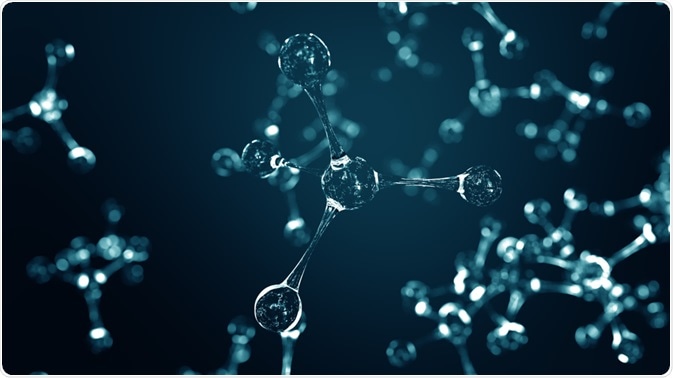Antigens are molecules which elicit an immune response or bind to components of the immune system, such as antibodies. Haptens are small molecules which also elicit an immune response, but in a different manner.

Novikov Aleksey | Shutterstock
How do haptens elicit an immune response?
Unlike antigens, haptens require an additional molecule before they are able to elicit an immune response. These additional molecules are called “carriers” and are often proteins to which the hapten binds to tightly; this is usually a covalent bond.
The formation of the hapten-carrier molecule complex causes the hapten to become immunogenic, resulting in the production of anti-hapten antibodies. Upon second exposure, these antibodies can recognize and bind to the same hapten in the absence of the carrier molecule. Therefore, although haptens need a carrier molecule to become immunogenic, they are also antigenic as they are able to bind to antibodies or other components of the immune response primed by the hapten-carrier molecule complex.
Which kinds of proteins bind to haptens?
Haptens frequently bind to proteins in blood serum, such as albumin. If the hapten-albumin complex is larger than 3,000 MW, it becomes immunogenic. The immune response elicited by hapten-carrier complex targets both the carrier (in this case, albumin) and the hapten.
Some haptens can bind to cell membranes, including red blood cells. In this instance, the cell-small molecule is then called a “neoantigen”. Drugs such as ibuprofen can form neoantigens with red blood cells. Once an immune response is elicited, and this then leads to lysis of the neoantigenic red blood cells (hemolytic anemia).
The discovery of haptens
Experiments by Karl Landsteiner in the early 20th century showed that compounds such as m-aminobenzene sulfonate were only able to elicit an immune response when conjugated to a carrier, such as ovalbumin.
The term “haptenic response” was coined, originating from the Greek “haptein” – to fasten. This haptenic response was used by Landsteiner to explore how antigen-antibody binding worked, and in more recent times has been used in the search for vaccines agains infectious diseases.
How do pharmaceutical drugs become haptens?
Pharmaceutical drugs are typically small molecules and can be haptens which bind to proteins in the blood. Once the immune response is elicited, this causes an immune reaction to the drug and this can lead to skin eruptions or anaphylactic shock in severe cases.
Antibiotics
Penicillins are a group of antibiotics with a beta-lactam core, which give the compounds their anti-bacterial properties. Penicillins can be broken down by beta-lactamase enzymes and can lead to the production of benzylpenicilloyl derivatives, which can then bind to other proteins and then elicit an immune response.
This is one of the causes of adverse immune-mediated reactions upon subsequent exposure to penicillins. Adverse reactions are highly dangerous and can range from urticaria, asthma, angioedema and, in most severe cases, anaphylaxis.
Cephalosporins, can also elicit and immune response as a hapten. While we do not currently know how cephalosporins become haptens, it has been noted that third and fourth generation cephalosporins are more likely to lead to an adverse immune-mediated reaction rather than the first or second generation cephalosporins.
Anesthetics
Halothane became used around 1950s as an anesthetic agent. It is potent, non-flammable and metabolized to trifluoroacetyl chloride. Trifluoroacetyl chloride then reacts with proteins in the liver to form a neoantigen, and once the immune response to this neoantigen is elicited then subsequent exposure to halothane can lead to inflammation of the liver through the activation of this immune response.
Further Reading